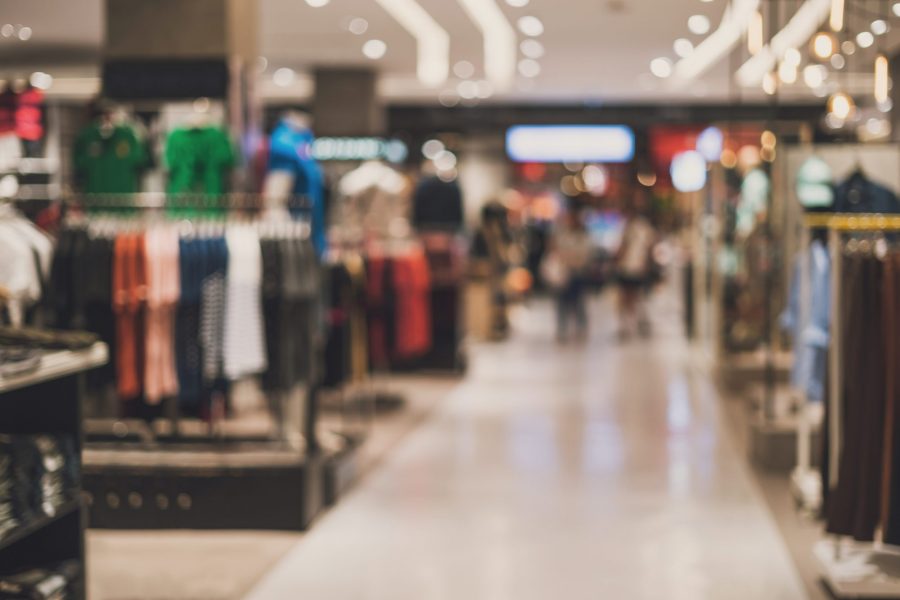
Our Blog
Inventory Shrinkage: How to Control a Persistent Problem
6 Min Read
Written by: Parcel Pending
Inventory shrinkage remains a significant source of lost revenue for businesses across the country – particularly in the retail sector. According to a recent national Retail Security Survey, missing or stolen physical inventory (i.e., inventory loss) accounted for close to $100 billion in losses in 2022.1 In-store, ecommerce, and omnichannel fraud have seen year-over-year increases, while employee and customer theft remains a significant cause for missing or lost merchandise.2
How should businesses deal with this problem? Unfortunately, there is no one-size-fits-all solution to prevent inventory shrinkage and, as a result, efforts have to be made on multiple fronts to reduce your inventory shrinkage rate. Identifying different types of shrinkage and proposing effective loss prevention solutions to mitigate the problem – like better surveillance and security – are an obvious first step. But so are more innovative inventory loss prevention solutions like parcel lockers (also known as electronic lockers). Because these lockers use digital technology, they can integrate seamlessly into existing point-of-sale (POS) and order management software to help improve inventory accuracy and reduce shrinkage.
Types of inventory shrinkage
The bite in profits and revenue that results from inventory shrink is significant. And, as technology has evolved, so have the ingenious techniques criminals employ to outdo unsuspecting merchants. Though criminal intent is a major source of the problem, inventory shrink can be caused by other factors too. Here is a list of some of the most common sources for inventory shrink.
- Shoplifting remains one of the leading causes of inventory shrink. Shoplifters can be one-off perpetrators or organized criminal groups. Shoplifting is when people who don’t work for a retailer steal inventory and merchandise. The most common scenario involves a shoplifter hiding something on their person. In some instances, criminals will organize themselves into groups to coordinate more significant shoplifting operations.3
- Employee theft occurs when individuals working for a company defraud or steal merchandise from their employer. Employee theft or internal theft is the second biggest source of inventory shrinkage for retailers in the country.4 While some theft occurs when employees steal physical goods, other instances involve fraud, such as undercharging an accomplice or pocketing payments directly.
- Return fraud happens when someone steals a product and then returns it for a refund, or when an item was purchased with counterfeit currency and is returned for a cash refund.5 In both instances, the individual is knowingly seeking a cash reimbursement for an item that they acquired illegally. Return fraud has become more common with recent increases in in-store traffic and omnichannel sales.6
- Administrative error accounts for a significant portion of inventory shrinkage and is more often than not the result of human error. Problems often become apparent during the accounting process when reviewing accounting records or the recorded inventory level and often manifest as a result of discrepancies between expected and actual inventory.7 Mistakes like typos, mislabeled merchandise, and other administrative errors can decrease physical inventory accuracy and add up to significant shrink, impacting both revenue and profitability.8
How to Prevent Inventory Shrinkage
Given the size of the problem and the impact it can have on a business’s bottom line, finding effective strategies to reduce and limit inventory shrink is critical. Here are some important strategies to put into place to mitigate the negative effects of inventory shrink on your business.
- Conspicuous surveillance and signage can serve as an important deterrent and critical first step in discouraging retail theft and shrinkage. Implementing security cameras and making sure items are security tagged or tethered not only helps prevent theft, but also helps discourage those who might be considering it as an option. As an added deterrent, consider posting signs that describe the security measures in place and the consequences if someone is caught shoplifting.
- Deliberate store organization typically involves designing a retail space where there are clear lines of sight so that staff and loss prevention teams can see all areas of the store and easily monitor client movement and activity. This can help reduce shrink by making it harder for would-be shoplifters to leave the store with unpaid items.9
- Well-trained employees offer a multitude of benefits in improving the sales experience for clients and shoppers but they also help deter thieves. By greeting customers on arrival and always being present and available to help, they make it harder for shoplifters to move around unnoticed. Make sure that employees are trained in shoplifting prevention measures and use incentives and recognition programs to encourage best practices.10
- Requiring a receipt for cash returns is a policy that should be strictly enforced without any exceptions. Purchases made using a credit card or store credit are in principle traceable, but anyone bringing back an item and expecting a refund in cash must present a valid receipt as proof of purchase. Consider using loyalty numbers or another form of ID to track customers who return items frequently.11
- Inventory management and monitoring should be incorporated into point-of-sale and order management systems to help keep track of the current inventory status. An inventory management system or an inventory management software allows businesses to follow the outflow of goods, and along with regular stock audits, ensures that the constantly shifting recorded inventory level matches records of sales and returns. Any discrepancies that indicate shrinkage or theft can be flagged and dealt with quickly with the help of inventory management software.12
Retail parcel lockers: helping you reduce inventory shrinkage
Parcel lockers can help reduce your inventory shrinkage rate by integrating and expanding the utility of your inventory management system – such as centralized order management and point-of-sale systems. When a customer places an order, the order collection is tracked using a secure 6-digit PIN or barcode. This ensures that only the intended recipient gets the purchased goods sold.
When it comes to returning items, Parcel Pending by Quadient’s Drop Box Lockers allow retailers to securely receive customer returns. A drop slot in the locker guarantees that returned items are kept safe until store associates can collect them. Customers initiate the returns process online, using their order information; as a result, only goods sold confirmed as purchased can be returned.
Most importantly, retail parcel lockers help enable full inventory and chain-of-custody tracking from purchase to collection and offer a streamlined and easy to use pick-up and returns process for customers and employees alike. They are also very easy to use and look great in any retail environment!
To learn more about how our locker solutions can help your retail store operations, contact a Parcel Pending representative today.
Sources:
- National Retail Federation. National Retail Security Survey. www.nrf.com. September 14, 2022. https://nrf.com/research/national-retail-security-survey-2022
- Ibid.
- Indeed. Shrinkage in Retail: What It Is and How To Prevent It. www.indeed.com. February 3, 2022. https://www.indeed.com/career-advice/career-development/shrinkage-retail
- National Retail Federation. National Retail Security Survey. www.nrf.com. September 14, 2022. https://nrf.com/research/national-retail-security-survey-2022
- Indeed. Shrinkage in Retail: What It Is and How To Prevent It. www.indeed.com. February 3, 2022. https://www.indeed.com/career-advice/career-development/shrinkage-retail
- National Retail Federation. National Retail Security Survey. www.nrf.com. September 14, 2022. https://nrf.com/research/national-retail-security-survey-2022
- Indeed. Shrinkage in Retail: What It Is and How To Prevent It. www.indeed.com. February 3, 2022. https://www.indeed.com/career-advice/career-development/shrinkage-retail
- Ibid.
- Keena, M. What is Retail Shrinkage? Tips and Strategies. www.shopify.com. April 12, 2021. https://www.shopify.com/retail/retail-shrinkage
- LinkedIn. How do you reduce inventory shrinkage and improve accuracy in multichannel and omnichannel retailing? www.linkedin.com. September 14, 2022. https://www.linkedin.com/advice/1/how-do-you-reduce-inventory-shrinkage-improve-1e
- Keena, M. What is Retail Shrinkage? Tips and Strategies. www.shopify.com. April 12, 2021. https://www.shopify.com/retail/retail-shrinkage
- LinkedIn. How do you reduce inventory shrinkage and improve accuracy in multichannel and omnichannel retailing? www.linkedin.com. September 14, 2022. https://www.linkedin.com/advice/1/how-do-you-reduce-inventory-shrinkage-improve-1e





